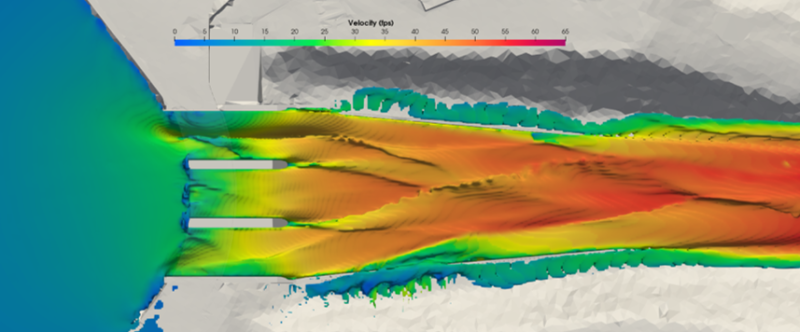Hydraulics: Difference between revisions
Rmanwaring (talk | contribs) No edit summary |
No edit summary |
||
| Line 46: | Line 46: | ||
<!-- For information on notation for in text citations visit https://www.mediawiki.org/wiki/Help:Cite Or simply enclose the citation as shown <ref> citation </ref> in the location of the in text mention. Citations will automatically populate below--> | <!-- For information on notation for in text citations visit https://www.mediawiki.org/wiki/Help:Cite Or simply enclose the citation as shown <ref> citation </ref> in the location of the in text mention. Citations will automatically populate below--> | ||
{{Citations}} | {{Citations}} | ||
<div class="col-12 col-lg-12 col-xl-4 mb-2 mb-lg-4 mb-xl-0"> | |||
<btn class="btn btn-gray"> | |||
Purposes of Dams|<span class="fa purpose-icon"></span> Purposes of Dams | |||
</btn> | |||
</div> | |||
<!-- Revision history information --> | <!-- Revision history information --> | ||
{{revhistinf}} | {{revhistinf}} | ||
Revision as of 21:07, 26 January 2023

|
| Analysis of spillway hydraulics using Computational Fluid Dynamics (CFD). |
The hydraulic design of a dam includes a knowledge of the following foundational topics: pressurized and free-surface flow, uniform flow, gradually and rapidly varied flow, steady and unsteady flow, energy and momentum principles, energy losses, and cavitation. [1]
Types of Evaluations
- Hydraulic Performance of Spillways
- Hydraulic Performance of Outlet Works
- Dam Breach Inundation Analysis
- Spillway Integrity Analysis
- Erosion & Scour Mitigation
- Tailwater Modeling
Types of Hydraulic Modeling
Selection of either a one-, two-, or three-dimensional hydraulic model is necessary depending on both the complexity of the flow conditions and the level of accuracy required of the model. Hydraulic modeling helps to attain a higher-optimized level of operation of the dam and reduce uncertainty.
“Maintaining the high efficiency of a spillway requires careful design of the spillway crest, the approach configuration, and the piers and abutments. For this reason, when design considerations require departure from established design data, model studies (or three-dimensional computer models) of the spillway system should be accomplished”. Physical model studies or three-dimensional Computational Fluid Dynamics (CFD) models are recommended to confirm any design that involves complex geometric considerations and/or large discharges and velocities. [1]
- One-Dimensional Hydraulic Models
- Two-Dimensional Hydraulic Models
- Three-Dimensional Hydraulic Models
Best Practices Resources
![]() Technical Release 210-60: Earth Dams and Reservoirs, NRCS, 2019
Technical Release 210-60: Earth Dams and Reservoirs, NRCS, 2019
![]() Selecting and Accommodating Inflow Design Floods for Dams (FEMA P-94), FEMA, 2013
Selecting and Accommodating Inflow Design Floods for Dams (FEMA P-94), FEMA, 2013
![]() Hydraulic Design of Spillways (EM 1110-2-1603), USACE, 1992
Hydraulic Design of Spillways (EM 1110-2-1603), USACE, 1992
![]() Design of Small Dams, USBR, 1987
Design of Small Dams, USBR, 1987
![]() Hydraulic Design of Reservoir Outlet Works (EM 1110-2-1602), USACE, 1980
Hydraulic Design of Reservoir Outlet Works (EM 1110-2-1602), USACE, 1980
Trainings
![]() On-Demand Webinar: Hydraulics 101: Intro to Hydraulics for Dam Safety
On-Demand Webinar: Hydraulics 101: Intro to Hydraulics for Dam Safety
![]() On-Demand Webinar: Hydraulics 201 for Dam Safety
On-Demand Webinar: Hydraulics 201 for Dam Safety
![]() On-Demand Webinar: Inlet and Outlet Hydraulics for Spillways and Outlet Structures
On-Demand Webinar: Inlet and Outlet Hydraulics for Spillways and Outlet Structures
![]() On-Demand Webinar: Designing Spillways to Mitigate Failure Modes
On-Demand Webinar: Designing Spillways to Mitigate Failure Modes
![]() On-Demand Webinar: Introduction to Addressing Inadequate Conveyance Capacity at Dams
On-Demand Webinar: Introduction to Addressing Inadequate Conveyance Capacity at Dams
Citations:
Revision ID: 6438
Revision Date: 01/26/2023
